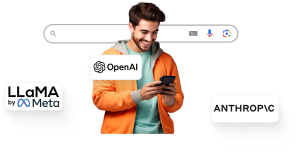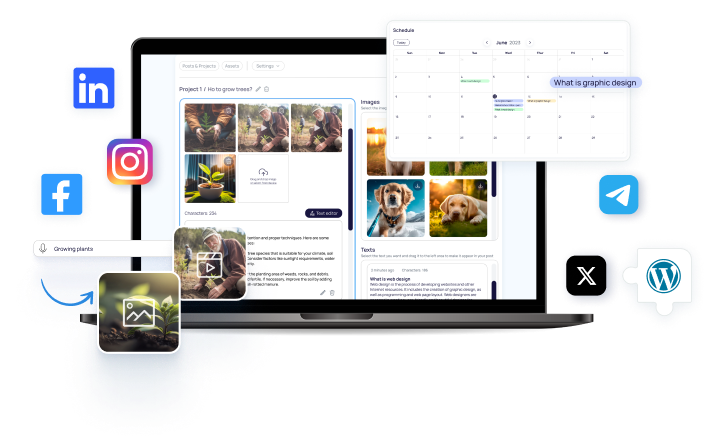None

Dr. Scott Gottlieb, a CNBC contributor and member of the boards of Pfizer, Tempus, Aetion Inc. , and Illumina, is also co-chair of Norwegian Cruise Line Holdings' and Royal Caribbean's "Healthy Sail Panel. " A study conducted by Harvard researchers revealed that ChatGPT, a large language model, achieved a remarkable feat: it outperformed approximately 10 percent of medical students who fail the U. S. Medical Licensing Exam. Consequently, the question arises as to when, rather than if, artificial intelligence devices will be able to fill the shoes of doctors. The integration of these AI tools within the medical field is closer than anticipated. To comprehend the potential for these tools to revolutionize medicine, it is important to categorize the different technologies and their applications in healthcare. Generally, AI tools in healthcare can be divided into two main categories: machine learning and natural language processing. Machine learning utilizes algorithms to enable computers to learn from data and make predictions, including data types such as images. On the other hand, natural language processing focuses on understanding and generating human language, enabling computers to transform unstructured text into organized, machine-readable data. These tools learn from trial and error and mimic human responses. One key difference between these approaches lies in their functionality. While machine learning models can be trained to perform specific tasks, large language models have the ability to understand and generate text, making them particularly valuable for replicating interactions with healthcare providers. In the field of medicine, the use of these technologies generally follows one of four different paths. The first path involves the application of large language models in administrative functions such as medical claims processing and the creation and analysis of medical records. Amazon's HealthScribe, for instance, is a programmable interface that transcribes conversations between doctors and patients, extracting vital medical information to facilitate the creation of structured encounter records. The second path utilizes supervised machine learning to enhance the interpretation of clinical data. Specialties like radiology, pathology, and cardiology already use AI for image analysis, allowing for the read of MRIs, evaluation of pathology slides, and interpretation of electrocardiograms. In fact, approximately 30 percent of radiology practices have adopted AI tools. Other specialties are also employing AI. Google Brain AI, for instance, has developed software that analyzes images from the back of the eye to diagnose diabetic macular edema and diabetic retinopathy, two common causes of blindness.
As these tools provide diagnoses and directly influence patient care, the FDA often classifies them as medical devices subject to regulation to ensure accuracy. The third category comprises AI tools that rely on large language models to extract clinical information from patient-specific data, interpreting it to prompt providers with potential diagnoses or treatments. Commonly known as clinical decision support software, these tools serve as intelligent assistants, designed to aid, not replace, a doctor's judgment. IBM's "Watson for Oncology" and Google Health's DeepMind Health are examples of such tools. As long as doctors remain involved and exercise independent judgment, these tools may not always be heavily regulated by the FDA. The FDA focuses more on whether the tools make definitive clinical decisions as opposed to providing information to aid doctors in their assessments. The fourth and final category represents the ultimate goal for AI in healthcare: large language models that operate fully autonomously, parsing a patient's entire medical record to diagnose conditions and prescribe treatments directly to the patient, without the need for physician involvement. Currently, there are only a few clinical language models available, and even the largest ones have a relatively small number of parameters. However, the main challenge in developing these fully autonomous systems may not lie solely in the strength of the models or the available training datasets. Rather, the biggest obstacle may be establishing an appropriate regulatory framework. Regulatory bodies exhibit hesitation, concerned that the models may produce errors and that the training datasets may contain incorrect decisions, leading to the replication of medical mistakes by AI models. Overcoming these hurdles in integrating fully autonomous systems into patient care holds immense promise, not only for improving outcomes but also for addressing the financial challenges faced by the healthcare industry. Healthcare is often cited as a field heavily burdened by Baumol's theory of cost disease, which explains why costs in labor-intensive industries tend to rise more rapidly than in other sectors. Technological input may not provide significant offsets to labor costs in fields like medicine, as each patient encounter still requires the involvement of a provider. The labor itself is the product in sectors like medicine. To address these challenges, medicine has incorporated non-physician providers to lower costs. However, this strategy only partially alleviates the central economic dilemma. When technology becomes the doctor, it offers a potential solution to Baumol's cost disease. As the quality and availability of clinical data for training large language models continue to expand, so will their capabilities. Although current development stages may not be ready to completely remove doctors from the decision-making process, these tools will increasingly enhance the productivity of healthcare providers and, in many cases, serve as substitutes for them.
Brief news summary
None
AI-powered Lead Generation in Social Media
and Search Engines
Let AI take control and automatically generate leads for you!

I'm your Content Manager, ready to handle your first test assignment
Learn how AI can help your business.
Let’s talk!

Paul Brody, EY: How Blockchain Is Transforming Gl…
Paul Brody, EY’s global blockchain leader and co-author of the 2023 book *Ethereum for Business*, discusses blockchain’s impact on payments, remittances, banking, and corporate finance with Global Finance.

Microsoft Introduces AI Safety Rankings for Cloud…
Microsoft is advancing AI safety on its Azure Foundry developer platform by introducing a new 'safety' ranking metric to evaluate AI models for potential risks, such as generating hate speech or enabling misuse.

Blockchain Group adds $68M in Bitcoin to corporat…
Paris-based cryptocurrency company Blockchain Group has purchased $68 million worth of Bitcoin, joining a growing number of European institutions incorporating BTC into their balance sheets.

Senate Republicans Revise AI Regulation Ban in Ta…
Senate Republicans have revised a contentious provision in their extensive tax legislation to preserve a policy that restricts state authority over artificial intelligence (AI) regulation.

AI Film Festival Highlights AI's Growing Role in …
The AI Film Festival, hosted by AI-generated video company Runway, has returned to New York for its third consecutive year, highlighting the rapidly expanding role of artificial intelligence in filmmaking.

ZK-Proof Blockchain Altcoin Lagrange (LA) Lifts O…
A zero-knowledge (ZK) proof altcoin has seen a significant surge after receiving support from Coinbase, the leading US-based cryptocurrency exchange platform.

Blockchain and Digital Assets Virtual Investor Co…
NEW YORK, June 06, 2025 (GLOBE NEWSWIRE) — Virtual Investor Conferences, the premier proprietary investor conference series, today announced that the presentations from the Blockchain and Digital Assets Virtual Investor Conference held on June 5th are now accessible for online viewing.

 Auto-Filling SEO Website as a Gift
Auto-Filling SEO Website as a Gift








 Auto-Filling SEO Website as a Gift
Auto-Filling SEO Website as a Gift

